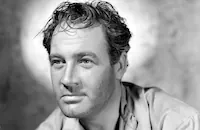52nd Street
Cast & Crew
Harold Young
Ian Hunter
Dorothy Peterson
Zasu Pitts
Pat Paterson
Leo Carrillo
Film Details
Technical Specs

Synopsis
In 1912, 52nd Street is populated by members of the highest social circles, including Rufus Rondell and his spinster sisters, haughty Adela and timid Letitia. Adela is outraged when Rufus marries beautiful cabaret singer Evelyn Macy, and although Letitia defends them, Adela refuses to sanction their love and disowns Rufus. While the newlyweds tour Europe, Evelyn's friends, Sid and Jack, open their own nightclub and hire Fiorello Zamarelli, an immigrant accordian player who dreams that his son Benjamin will be a concert pianist. In 1915, Sid and Jack receive a letter from Rufus saying that Evelyn is ill after the birth of their daughter Margaret. Rufus brings his family to the house across the street from Adela's, which he inherited from his father, but it is too late to restore Evelyn's health. Before she dies, Evelyn begs Rufus to rear Margaret to be a lady, proper enough to fit into her aunts' social circle. As the years pass, Margaret is educated at the finest boarding schools, while 52nd Street is gradually taken over by speakeasies. Soon the only stately homes left are Rufus' and Adela's, but Rufus is forced to turn his home into a club to avoid bankruptcy, and he becomes partners with Fiorello, who is horrified when he discovers that Benjamin is a musician in Sid and Jack's club. In 1929, many people are ruined by the stockmarket crash, but Rufus, Fiorello, Sid and Jack all prosper. Rufus discreetly supports his sisters, who do not know that they lost their money. Adela's vengeance continues, and now takes the form of influencing her friends to turn down invitations to a party for Margaret. Fiorello overhears Rufus discussing the matter and he goes to Adela and Letitia in an attempt to heal the breach. Adela refuses to give in, but Fiorello is touched by Letitia's scrapbook of Margaret's life. Sid, Jack and Benjamin decide to throw Margaret a perfect party and coach their fellow entertainers on how to act like society swells. Their plans fall through, however, when Margaret, who does not know what Rufus' business is, insists on proving to Rufus that she is not a snob. Benjamin starts a commotion at the party to please her, and soon everyone is arrested. Later, Margaret tells Rufus she wants no part of her aunts' life and prefers to be a performer like her mother. Despite Rufus' adamant objections to her plans, as well as her romance with Benjamin, Margaret gets a job singing at Sid and Jack's. Fiorello is again determined to play peacemaker, and he, Benjamin and Margaret go to see Adela and Letitia. Overjoyed finally to see Margaret, Adela agrees to reunite the family, especially when she learns that Rufus has been supporting her. The sisters open a nightclub in their home and are soon doing booming business. One night, Letitia fulfills her lifelong desire to perform, and while she is singing Rufus comes in. He is furious and about to leave when Margaret enters, singing Evelyn's song. Rufus is won over and the reunited Rondell family wholeheartedly approves of Benjamin and Margaret's love.

Director
Harold Young
Cast

Ian Hunter

Dorothy Peterson

Zasu Pitts
Pat Paterson

Leo Carrillo

Kenny Baker
Marla Shelton
Ella Logan
Collette Lyons
Al Shean
Sid Silvers
Jack White
Jack Adair
Georgie Tapps
Jerry Colonna
Al Norman
Maurice Rocco
Dorothy Saulter
Cooke & Brown

Roman Bohnen
Crew
Walter Bullock
Danny Dare
Pat Harrington Sr.
Grover Jones
Charles Kerr
Otho Lovering
Paul Neal
Alfred Newman
William Reynolds
Wade Rubottom
George Schneiderman
Isabelle Sheridan
Sid Silvers
Sid Silvers
Harold Spina
Helen Taylor
Alexander Toluboff
Walter Wanger
Jack White

Film Details
Technical Specs

Quotes
Trivia
Notes
According to a March 1937 Hollywood Reporter news item, 52nd Street was based on an idea by Hal Horne. In February 1937, Hollywood Reporter announced that Gene Towne and Graham Baker were "scripting" the film, but their contribution to the screenplay has not been determined. Hollywood Reporter also notes that actor Ian Hunter was borrowed from Warner Bros., and that Collette Lyons and Kenny Baker were borrowed from producer Mervyn LeRoy. Although a Hollywood Reporter pre-production news item noted that actor Jack Haley was set for a part, he was not in the released film. Pre-release Hollywood Reporter news items indicate the following: Producer Walter Wanger was forced to eliminate a number of cast members, including Stuff Smith and his orchestra, from an announced cast list due to the fact that he had lined-up too many performers for the picture. Jack White and Pat Harrington, operators of the "18 Club" on 52nd street, were hired as technical advisors on the film. Some filming took place in Forty Acres, CA. An October 1937 Hollywood Reporter news item lists Wade Boteler in the cast, but his appearance in the released film has not been confirmed. The pressbook for 52nd Street notes that nine cameras were used in the filming of one of the big nightclub sequences, setting a new record for the number of cameras used for an indoor scene. More than forty sets were constructed for the picture, one of which, a city block of Manhattan, was erected twenty miles from Hollywood and had to be "reconstructed several times in keeping with the evolution of 52nd Street." The pressbook also indicates that Neil Wheeler served as the "set's anachronism dance checker-upper," and claims that the film marked the "vocal debuts" of Pat Paterson and ZaSu Pitts. Pitts, however, made her singing debut in the 1934 RKO film Sing and Like It (see below).












